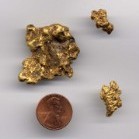Minelab Gpx17 (17x13) Mono Coil Now Or Wait For Nf 16x10 Mono
-
Similar Content
-
- 2 replies
- 136 views
-
- 29 replies
- 1,076 views
-
- 1 reply
- 226 views
-
- 19 replies
- 2,318 views
-
- 5 replies
- 891 views
-
- 1 reply
- 390 views
-
-







Recommended Posts
Create an account or sign in to comment
You need to be a member in order to leave a comment
Create an account
Sign up for a new account in our community. It's easy!
Register a new accountSign in
Already have an account? Sign in here.
Sign In Now